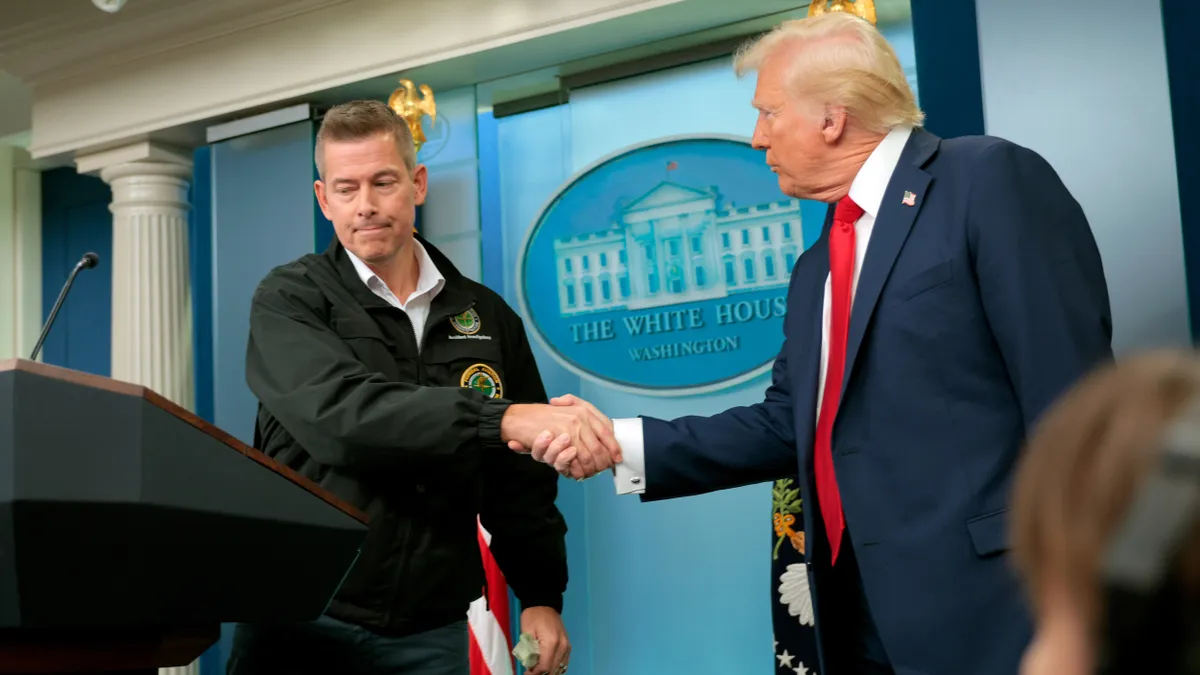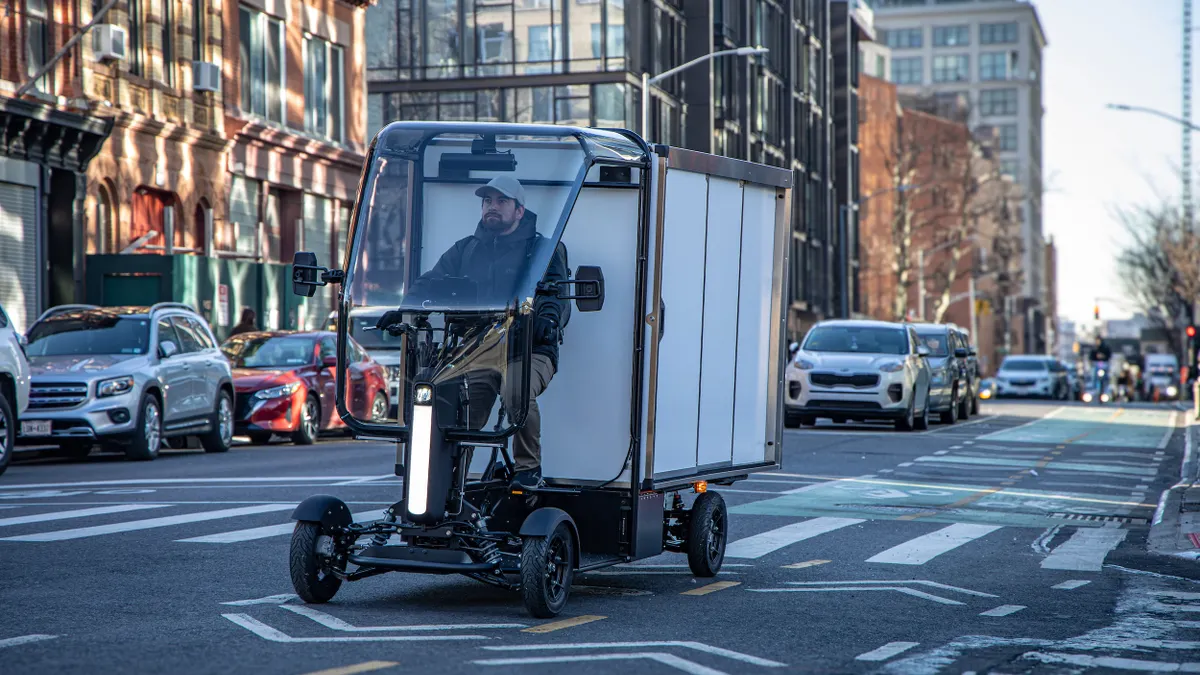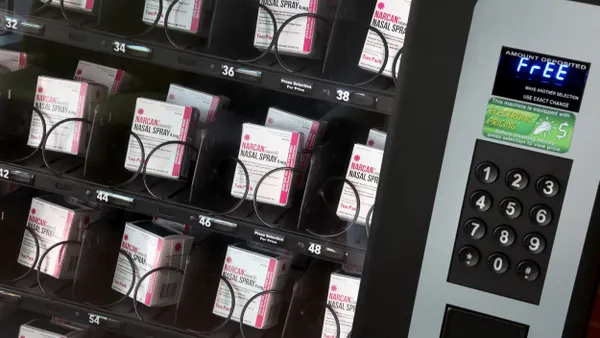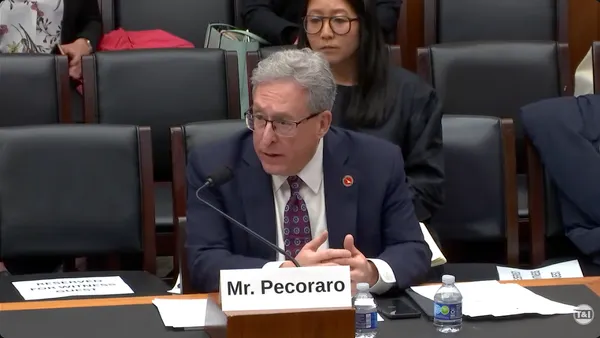Dive Brief:
- New York City intersections equipped with traffic signals that give pedestrians a seven-second head start are associated with a 33% reduction in fatal and non-fatal injuries, according to a study from the Columbia University Mailman School of Public Health published Friday.
- Researchers analyzed over 6,000 intersections, finding that the technique known as “leading pedestrian intervals” reduced injuries at all intersection types. Fatal pedestrian collisions during daylight hours were cut by 65%.
- Leading pedestrian intervals are a low-cost adjustment to signal timing that increases the likelihood of turning drivers yielding to pedestrians and allows slower-moving people an increased margin of safety, according to the Federal Highway Administration.
Dive Insight:
Although pedestrian deaths declined in the U.S. over the past two years, they remain nearly 20% higher than in 2016, according to a Governors Highway Safety Association report. More than 7,100 pedestrians died last year in traffic collisions.
Traffic signals with leading pedestrian intervals typically give people from three to 11 seconds to enter the intersection before giving a green signal to motorists making turns.
“The idea is to give pedestrians time to reach the center of the intersection where they’re more visible,” lead author Christopher Morrison, assistant professor of epidemiology at Columbia Mailman School said in a statement. “Most pedestrian-vehicle crashes happen near the curb, where drivers are less likely to see people crossing.”
The Florida cities of Gainesville, St. Petersburg and Tampa Bay, along with Seattle and Washington, D.C, are among municipalities that have installed leading pedestrian interval signaling.
The Columbia Mailman School study looked at crash data from 2013 to 2018, focusing on pedestrian injuries within 100 feet of a signalized intersection.
“A 7-second delay for drivers can mean the difference between life and death for pedestrians,” Morrison said. “Our findings show they work — and could be adopted more widely.”











